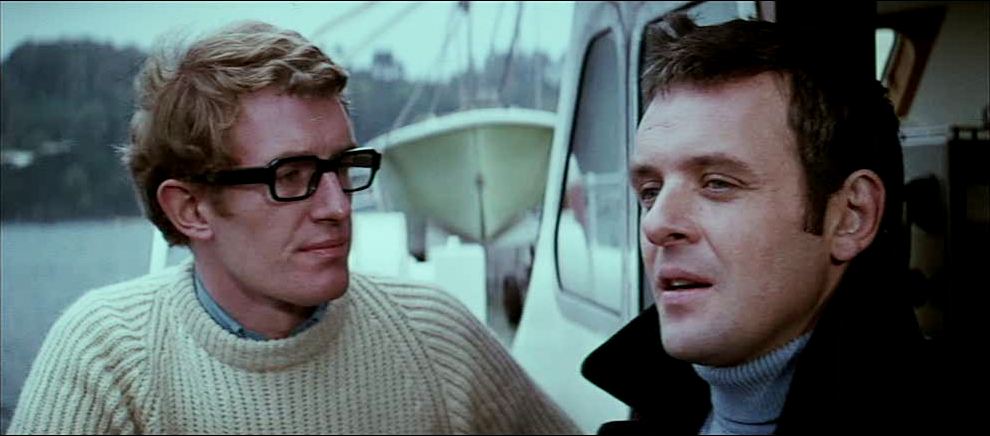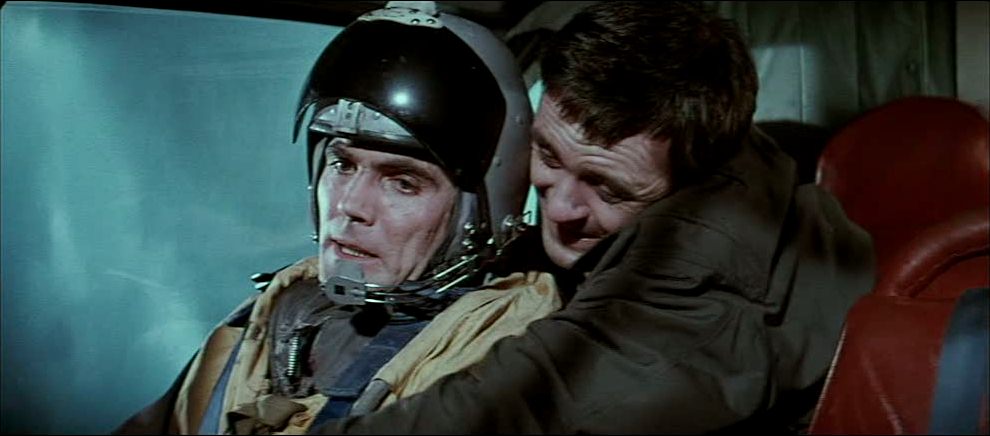
Long before The Silence of the Lambs (1991) finally made him a household name, Anthony Hopkins had built a formidable reputation as an actor on the stage. But he had also been hovering in the film world since his eye-catching feature debut in the late 1960s with The Lion in Winter. This indecisive career was seen as hurting his standing in both mediums early in the ‘80s: “And whatever happened to Anthony Hopkins?” film and theatre critic John Walker asked in 1982, fearing he would fall into the same traps as the likes of Richard Burton and Peter O’Toole but without ever having matched their meteoric phases. For over twenty years Hopkins often seemed on the verge of becoming a major screen star, after the likes of his role as a dubious spymaster in 1969’s John Le Carre adaptation The Looking Glass War, the vexed, ill-shaven police detective with a family at risk in Juggernaut (1974), and his impressive turn opposite John Hurt in The Elephant Man (1980). Hopkins’ willingness to deliver expertly oversized performances is part of his value today as an older actor who found a rare niche of fame, but as a younger actor, his cerebral, dour, aggressive persona limited his chances of succeeding as a romantic lead. His obvious intelligence and emotionally discursive style matched the impression he gave of his seeing right through any lesser material sent his way. When Eight Bells Toll, one of his few traditional starring roles, is the closest anyone will come to seeing Hopkins play James Bond. When Eight Bells Tollis in fact an Alistair Maclean adaptation, the author himself writing the screenplay, from one of his novels which often leaned into Fleming-esque territory, although Maclean’s heroes and action each tend as usual to be much less glamorous.


Calvert resists returning to London

Peter Ibbetson’s widescreen photography makes the most of the innately dramatic location photography around the Scottish and Irish coastlines, generating a sweeping, primal backdrop for the genre shenanigans that renders them incrementally more substantial and affecting, until it starts to look a little like Ryan’s Daughter with more action, especially thanks to director Etienne Perier’s enriching eye for mise-en-scene. Rather than the glitzy polish of the era’s spy films, When Eight Bells Toll, whilst hardly straining to be lifelike or antiheroic, possesses a sense of physical extremes and paranoid danger – particularly in the way the village’s oppressive atmosphere redolent of The Prisoner TV series – which lend it an immediate and entertaining kind of force. Perier had gone to Hollywood soon after his start in French cinema to make the little-remembered Bridge to the Sun (1961) and then settled into a peculiar peripatetic career: after this film he made the engaging, if over-ambitious, neo-pulp epic Zeppelin(1972). The chilly, blasted landscapes make a fine setting for Hopkins

The villains try to kill Calvert repeatedly, and succeed in killing Hunslett, last seen being chased down in a dinghy by the henchmen and turning up finally hooked onto the anchor chain of the yacht. This is one of the film’s best moments, as Hunslett’s body is slowly hauled from the dark deep by Calvert, who had hoped he was only being kept prisoner, like several other friends and loved-ones of the locals being pressed into aiding the hijackers. Perier manages to invest these images with a peculiar aesthetic and dramatic darkness, a quality which infects much of the rest of the film. Calvert gets even, ramming a boat full of henchmen and shooting them as they struggle in the water with a cold variety of reckoning, and he sets about pounding the enemy organisation into the ground. He gets some unexpected help in the form of Uncle Arthur, who, after unwillingly investigating some of Calvert’s leads, realises what they’re up against and comes north to check up, taking Hunslett’s place in one of the stranger action movie partnerships ever: Morley’s bluff, corpulent charm squarely offsets Hopkins’ grim wit. A third member is added to the team when Charlotte swims over from Skouras’ yacht and claims to be escaping his regime, engaging in a distrustful flirtation with Calvert before proving to be a mole. Romance was never MacLean or Hopkins’ strong suit, and the sub-plot of Charlotte is an almost complete bust, alas, in spite of casting the comely Mrs Alain Delon. Nathalie maintains that glazed, louche-eyed elegance of too many Francophonic starlets of the era where the part seems to need a more playful, jaggedly charismatic actress. The filmmakers never seem to quite decide whether Charlotte is supposed to be a likeable bad girl or a straight femme fatale, and the distinction never gains much importance either way, so it all provides a singular drag on the otherwise admirably sturdy proceedings. The final scene, where Calvert lets her go even though she’s proven herself duplicitous, is more than slightly bewildering, only coherent in that it suits Calvert’s slightly subversive sense of justice, happy to redistribute some wealth long after he’s made it plain he doesn’t really care what happens to rich people’s bullion.

Much more entertaining, if far more brief, is Hopkins





































Rollerball (1975): Timeless Sci-Fi Classic